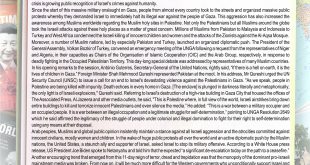The latest flare-up of tensions along the Line of Control (LoC) in Kashmir is a reminder of the accident-prone nature of Pakistan-India relations in a strategic environment unaltered by improvement in trade and political ties.
Despite trading accusations in the past several days, both countries have shown mutual interest in defusing the present tensions to keep the process of normalisation on track. Even so questions have been raised about whether the existing arrangements are adequate for escalation control or need to be strengthened by more formal and robust mechanisms? If cross-LoC clashes a few weeks ago had their genesis in India’s construction of new bunkers that are barred by a 2005 agreement that followed the 2003 ceasefire, how can similar violence be averted in the future?
Recalling the sequence of events so far will help to answer these questions. Let us therefore consider the known facts about the incidents of January 6, 8 and 10 and the developments that led up to them.
The Pakistani version of how it all started focuses on the attempt by the Indian army around three months ago to build new observation posts around the village of Charonda in the Haji Pir sector.
Here it is important to recall the joint statement agreed between the two countries in 2005. This followed the LoC ceasefire agreed at the prime ministerial-level in 2003. In the August 8, 2005 joint statement issued after the second round of expert-level talks, both countries agreed not to ‘develop any new posts and defence works along the LoC.’ This commitment was reaffirmed in subsequent joint statements. When efforts to build new posts were made or suspected in the past, border flag meetings were sought to resolve the matter.
This time around when Pakistan’s military authorities detected new constructions being built near the LoC, they asked for the customary flag meeting to address the issue. The directors general of Military Operations from both countries also spoke twice on the hotline. When Pakistan’s objection to the construction work was conveyed it was met by the Indian insistence that this was routine maintenance of old fortifications and not a ceasefire violation. During October warnings over a loudspeaker by Pakistani troops in the area also yielded no results. Thereafter the construction became the cause of exchange of fire between the two.
An action-reaction cycle followed. Mortar fire led to Indian claims of civilian casualties in the village. Then followed a cross-border Indian attack on the Pakistani position at Sawan Patra from where the firing is said to have come. While exchange of fire across the LoC is not unusual, crossing the Line is relatively rare and represents an escalatory step regarded by both sides as a serious ceasefire violation. The Indian incursion within 30 metres of the Pakistani post was repulsed.
The raiding party was chased away but the January 6 clash claimed the life of a Pakistani soldier and left another wounded.
The day after the Indian attack, on January 7, Pakistan’s DG, MO spoke on the hotline with his Indian counterpart to lodge a complaint about the “unacceptable†provocation. A day later, Pakistani troops were accused by Indian officials of conducting a cross-border raid in another sector, at Hotspring, allegedly killing two soldiers, one of whom was said to have been beheaded.
On the morning of January 9, the two DGs spoke again. This time the Indian official protested and demanded that Pakistan ‘return’ the head of the Indian soldier. Pakistan’s military and Foreign Ministry spokesmen denied this incident took place and described it as an Indian fabrication to divert attention from the first incident and instead malign Pakistan. Tellingly an Indian army statement of January 8, attributed to a spokesman of the Northern Command, made no reference to any mutilation of soldiers’ bodies, only to a fire-fight in which two soldiers died.
Meanwhile as much of the Indian media whipped up a frenzy Pakistan’s media remained muted in its response. When opposition parties assailed the Congress government for its ‘weak response’ more hawkish statements emerged from India’s political and military leaders. It didn’t stop there. On January 10, at Hotspring in Azad
Kashmir, sniper fire from Indian troops claimed the life of a Pakistani soldier.
In the two capitals, high commissioners were summoned, protests lodged and demands made for investigation into the disputed incidents. Islamabad’s offer to hold an independent inquiry of ceasefire violations by the United Nations Observers Group for India and Pakistan (UNOGIP) was rebuffed by Delhi, to no-one’s surprise. India has never allowed UNMOGIP to operate on its side of the LoC and since 1972 also refused to report complaints to the observer group.
Border tensions are likely to subside in the days ahead. But the fragility of the LoC in the fraught context of a festering dispute will persist. And in the absence of any accommodation over Kashmir, the 2003 ceasefire will continue to serve as a way of maintaining a tenuous peace in a heavily militarised and volatile region.
Can this process be sustained if contentious issues remain unaddressed while movement is made on ‘softer’ issues?
The ceasefire has by and large held since 2003 despite periodic exchanges of fire and occasional skirmishes. It was also observed during the most serious escalation in tensions in recent years that followed the 2008 terrorist attacks in Mumbai. After 2008, Indian authorities frequently acknowledged that the cross-LoC ‘infiltration’ had substantially declined. But complaints of ceasefire breaches have been increasing. These mutual complaints were most recently reiterated during the expert-level talks on military CBMs in Delhi on December 28, 2012.
If the ceasefire is not to become a hostage to incidents like the recent ones, triggered by contention over new constructions, it would make sense to formalise the agreement on non-construction of new posts along the LoC. Last week’s hostilities illustrate that this mutual commitment can be undermined by disagreements over whether constructions are within the barred range.
The 2005 undertaking on non-construction of posts has been under discussion in the expert-level talks since 2006. It also figured in the last round in December 2012. Discussion has been aimed at evolving a framework agreement by establishing clear parameters for non-construction of defence posts. But progress has been glacial. No consensus has emerged on the proposed elements for such an agreement. Pakistan wants the posts to be barred within 500 metres on either side of the LoC. Discussion has also ranged over specifying the limits of maintenance work for existing posts. India insists that maintenance-related work on present posts should include upgrade of the LoC fence. Islamabad finds this unacceptable.
Reconciling these differences to conclude a comprehensive Confidence Building Measure (CBM) might help strengthen the ceasefire’s operation. Chances of future contention can also be minimised if this incorporates an explicit mechanism for a dispute resolution. This will not eliminate the incidents that become flashpoints for border clashes but it would address an aspect of an easily inflamed situation.
A more fundamental question is raised about the future of the normalisation process. Can this process be sustained if contentious issues remain unaddressed while movement is made on ‘softer’ issues?
Ultimately durable detente depends as much on the two countries’ ability to overcome their divergences as on pursuing areas of convergence. Unless meaningful steps are taken to improve the security climate and resolve disputes, the normalisation process will be at risk of relapsing into tensions. Until this broader context evolves, the LoC will continue to signify more vulnerability than stability.
 Jahangir's World Times First Comprehensive Magazine for students/teachers of competitive exams and general readers as well.
Jahangir's World Times First Comprehensive Magazine for students/teachers of competitive exams and general readers as well.


